How my personal experience of pregnancy and birth led me to set up Wellmother in 1990.
People have been asking me to share my story of how and why I set up Wellmother in 1990. Back then there was very little specialist bodywork or movement classes available for pregnancy and even less postnatally. There were no baby massage or yoga classes, indeed nothing for mothers and babies. The only alternative approach in the UK was the National Childbirth Trust. This was a great resource, but, as a bodyworker, I wanted something more practical.
Since there were no trainings either in pregnancy bodywork or pregnancy yoga, I had to use my own pregnancies to develop my work. These days if you want to specialise in maternity work, you don’t necessarily need to be pregnant yourself because there are many trainings in all kinds of work out there for you. While it is true that many of my students have wanted to specialise in maternity work because of their own pregnancies not all of them have been pregnant. My daughter, Rosa, who was the inspiration for my career in maternity work, has been assisting me in my “Pregnancy massage” teaching for some years and her perspectives are helpful. We each have our unique journey. Here is mine.
Becoming pregnant and feeling well
I was recently out of my 4 year shiatsu training (Shiatsu is a bit like acupuncture but using our hands to give pressure to the points. We also work the areas between the points, and may include stretches to the meridian as well as more massage type strokes see my blog on shiatsu ) and beginning to assist my teacher, Sonia Moriceau, on the next 4 year training, when, in 1989, I became pregnant. Although I had worked with a few pregnant clients, I had felt a little out of my depth. We hadn’t covered pregnancy in any specific way, other than work with each woman’s energies and being shown a few points and areas (e.g the abdomen to go gently) to be more cautious of working, like the abdomen and sacrum.
I felt strong and healthy because during our training we did a lot of meridian stretching and meditation exercises to support giving shiatsu. I have a YouTube video on these stretches for the 12 meridians.
I was used to doing them daily, and didn’t need to adapt them much at all. In my first trimester I found them all really helpful, and the only one I needed to adapt was the Stomach/Spleen one. Before studying shiatsu, I had been doing yoga and meditation from y teens and had also studied massage, so I was fairly aware of my body, but I want to know more about the best ways to support myself in pregnancy and beyond.
Looking for some kind of specific pregnancy support
At the time, in Bristol, UK where I lived, there wasn’t a great deal on offer for pregnant women. Not at all like today where you can do anything from yoga, to pilates, swimming, hynobirthing and much more. There was one teacher offering one yoga class and another offering some acqua gym. No-one offered pregnancy massage or shiatsu and a few acupuncturists would work with pregnant clients. I couldn’t find any shiatsu or massage schools which offered pregnancy training.
There weren’t that many books either. I was inspired by Ina May Gaskin’s “Spiritual Midwifery”, and Federick Leboyer’s “Birth without Violence” – imagining birth from a baby’s point of view. Both have informed my work. Then, in early pregnancy, while travelling on holiday in the US, I found a book by Elizabeth Noble, a US physiotherapist “Essential Exercises for the Childbearing Year”. This was exactly what I was looking for. Her approach was about enabling women to be as active as was appropriate for them. It was not fear based, but empowering.
Training in Boston US with Elizabeth Noble
I decided to do Elizabeth’s training and so a few months later, still pregnant, I was back in the US, in Boston. It was particularly intense for me, because most of the other students were physiotherapists and a high level of anatomy and physiology was assumed. We covered exercise in pregnancy and postnatally, birth positions and partner and baby massage. I was particularly taken by a video of women giving birth squatting in a clinic in Curitiba, Brazil in the late 70’s, and decided this is how I wanted to birth my daughter. I still show this video in my classes on birth. It was the pioneering work of 2 obstetricians ( Moyses and his son Claudio Paciornik) who, having observed better outcomes for village women, favoured allowing mothers to move how they wanted, and to be with their baby rather than putting them in a nursery. Sadly Brazil now has one of the highest Caesarean rates internationally.
Setting up weekly “exercise” classes in Bristol
I decided to use my training with Elizabeth, to teach weekly exercise classes in Bristol, where I lived, for pregnant and postnatal women and their babies, after my maternity leave. I now had increased confidence in listening to my body. As I practiced all the exercises I had learnt, I linked them with the meridian exercises and my own yoga practice to get ideas for my classes. I especially enjoyed Elizabeth’s exercises on all fours, which could be continued with a baby postnatally along with standing hip rocking movements. She was a huge fan of the squatting position, not only for giving birth but strengthening the pelvic floor and lower back. Doing shiatsu we use versions of squatting movements and I felt good squatting. I continued giving shiatsu to my clients and enjoyed doing it all the way through. Working on a futon, on the floor, felt comfortable for me and I worked until a few weeks before I gave birth.
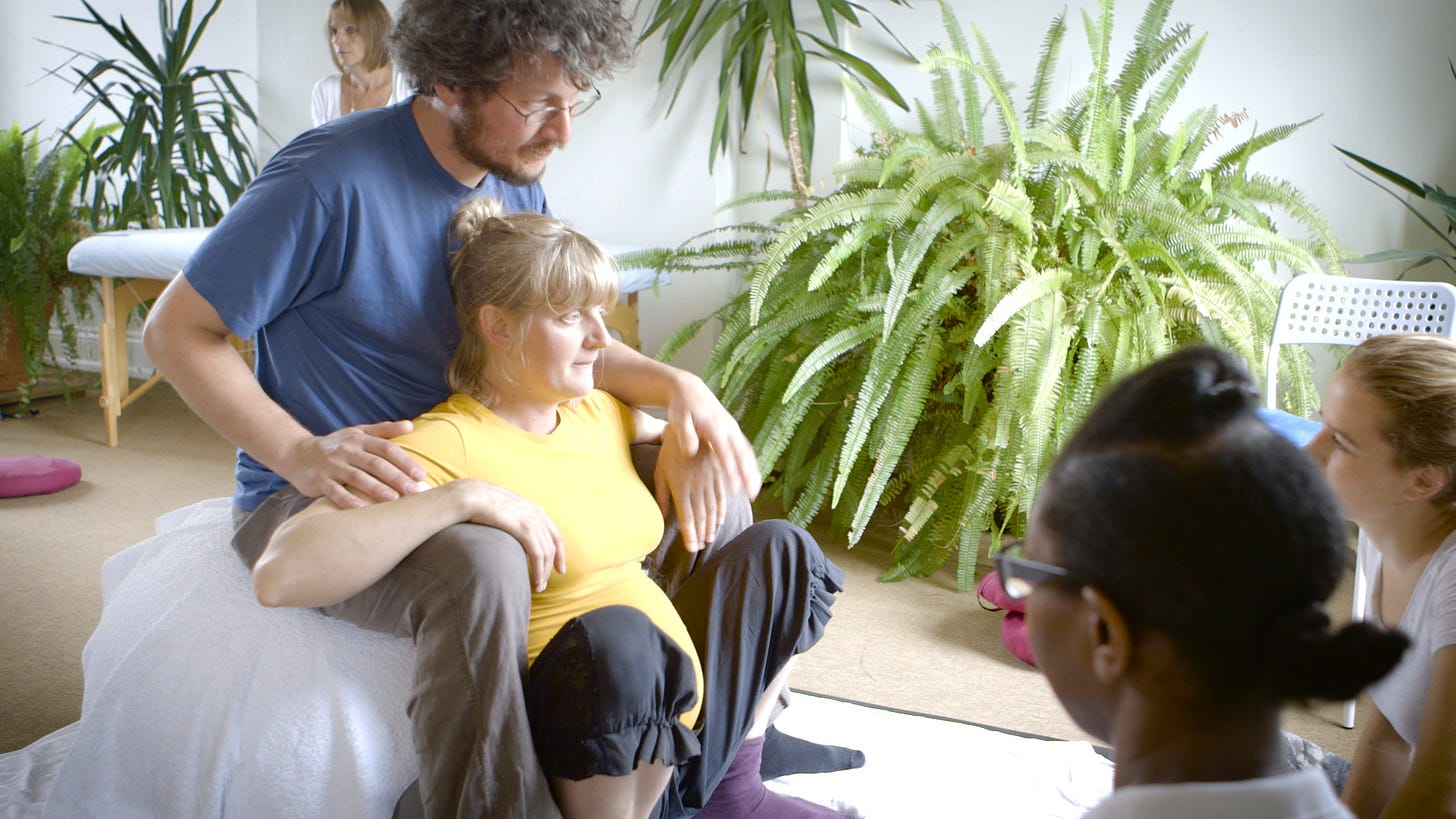
Exploring the so called “forbidden points.”
I also became interested in the so called “forbidden points” and started wondering why they were forbidden. I tried many on myself and none felt disturbing or intrusive. Quite the opposite – many felt helpful. I received regular shiatsu and massage during my pregnancy, with colleagues, as well as with Sonia, my teacher, and we explored together what felt helpful. I really enjoyed someone else massaging my abdomen and found deep work around my often tense shoulders and upper back and my lower back (sacrum) especially helpful. Sonia showed Chris my partner some of the points I appreciated so he could use them during my birth. When I first started teaching, I was still a little wary of them, but over the years I find they are often indicated.
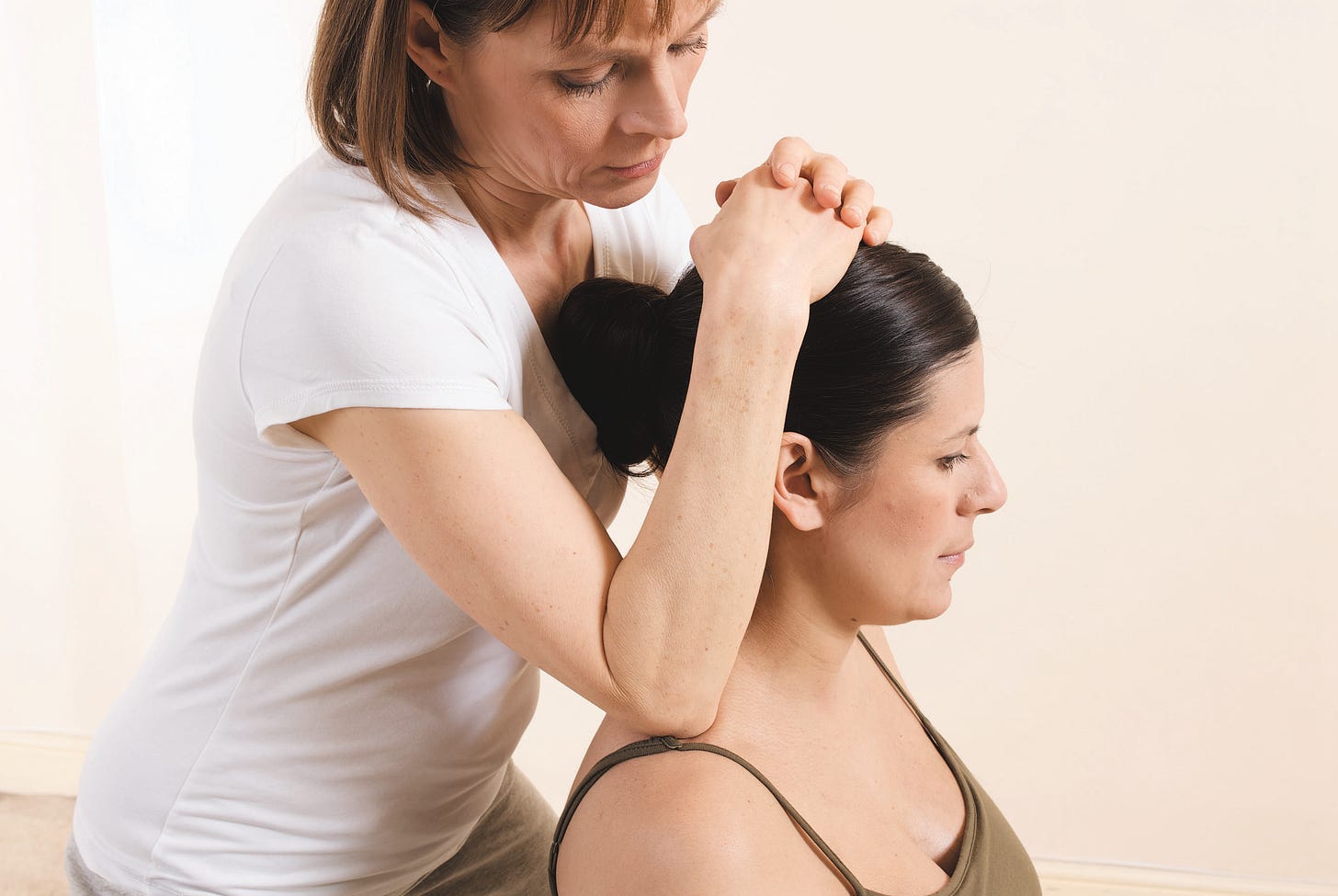
Giving birth at home
My mother had always told me how giving birth to me, her first child, was the best day of her life. She often told me how easy and enjoyable it was, and so I had never considered giving birth in a hospital. Indeed, I was quite shocked when my doctor asked me which hospital I wanted to birth in. When he didn’t seem that supportive of me being at home, I changed to a doctor who was. The new doctor was even supportive of me being vegan and going skiing. He was more supportive than the main midwife I saw, who I felt was often patronising.
People thought that because I wanted a home birth I would want a water birth, but I wanted to be close to the earth. During my birth Chris used many of the points in my shoulders and lower back which Sonia had taught him. These helped me stay in touch with my body and I found the positions I had been exploring helped me to move instinctively. I gave birth squatting, but having to block out the midwife who was telling me to push when I didn’t feel it was right. My doctor sat quietly in the corner, and I felt supported by his presence. Once Rosa was born, we sat and held her, when suddenly I felt the most intense pain. The midwife, despite my request not to, was pulling on my umbilical cord. I started haemorrhaging heavily, and the doctor had to set up a drip, and administer synthetic oxytocin, while Chris gave me a homeopathic remedy. It was a brutal end to a beautiful birth I had to go to hospital to have my placenta manually removed and receive a blood transfusion. Despite this, I was able to breastfeed without any problems, although I was extremely tired for many weeks.
Deep rest and postnatal recovery
It was good for me to have to rest. I had intended to assist on the shiatsu group when Rosa was only a few weeks old, but this now seemed completely inappropriate. Like many first time mums, I hadn’t realised how much energy looking after a new born would take.
I realised how much I needed to receive shiatsu and massage. They gave me vital times to deeply rest and gradually build up my energies. I found the exercises I had learnt with Elisabeth Noble helped me recover tone in my abdomen and pelvic floor, and release tension in my shoulders. I enjoyed feeding Rosa for 18 months as well as exploring baby shiatsu and massage with her. She loved it and it was relaxing for me too.
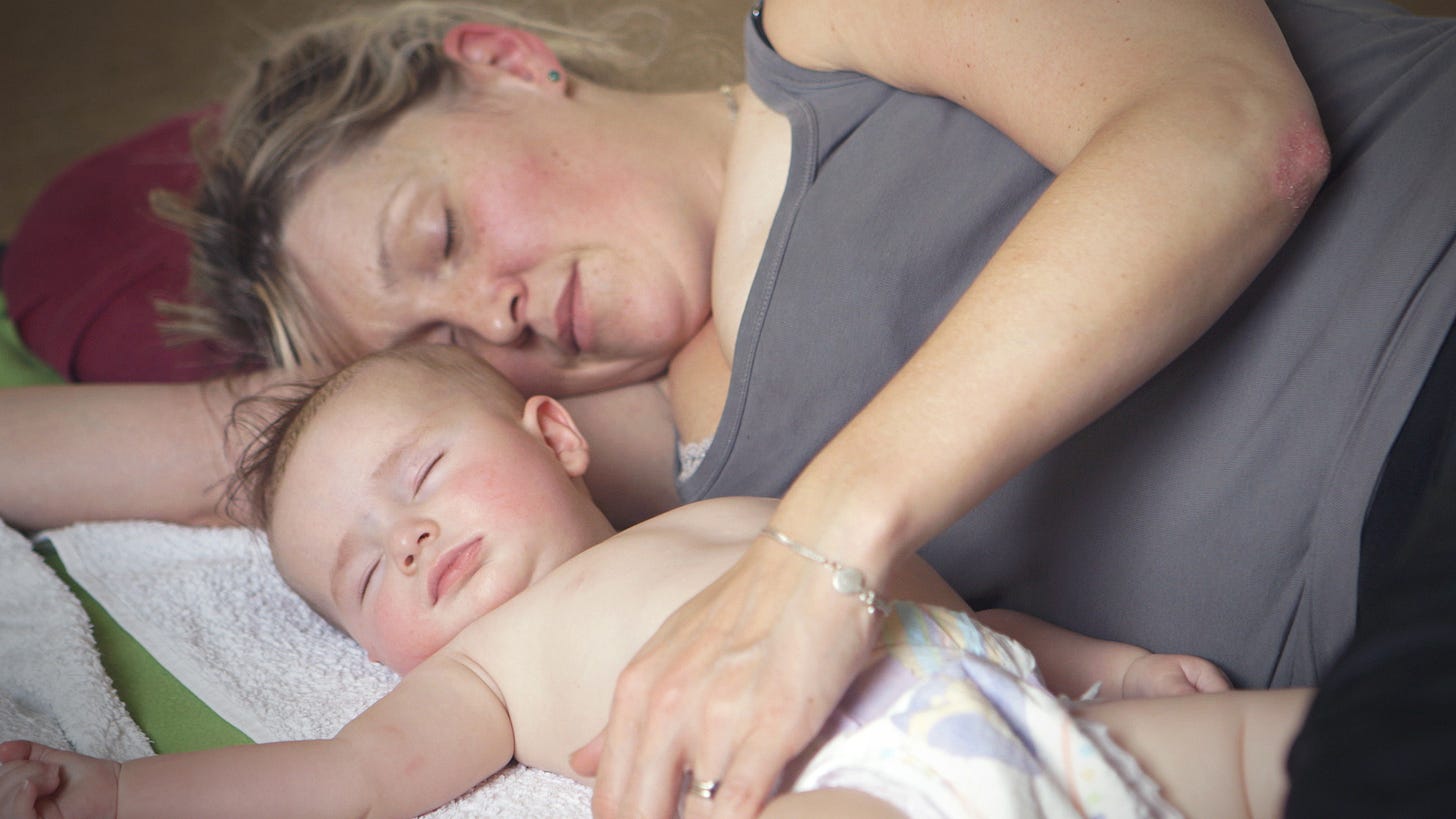
Teaching the first Wellmother classes
When I started teaching my weekly classes in Bristol for pregnancy and postnatally, I took baby Rosa along with me and as she grew older, realised how important it was to provide a creche for my students with other children. Rosa was a perfect model for baby massage and for demonstrating the postnatal exercises. Teaching was nourishing for me too.
Many of my students came to see me for shiatsu and massage. I saw women in early pregnancy, even attending some births, both at home and in hospital, and many returned to me for postnatal work, either for themselves or their babies. Eventually I discovered the powerful Extraordinary Vessels which are the basis of my work today.
Birth preparation workshops
Chris and I set up regular birth preparation workshops. He was a yoga teacher and we worked out together lots of partner movement and stretches, so the partner could give effective shiatsu. We taught what had worked for me in labour – deep sacral pressure, combined with some powerful points in the top of the shoulders (trapezius, GB21) and calming points in the centre of the palms (HP8) and on the ball of the foot (KD1) along with some of the other “forbidden points” SP6, LI4 and various ways of touching all parts of the body with shiatsu and massage strokes. .
We also taught sound and breath work. I had appreciated focusing on my breath and using touch on my abdomen along with sounds to connect with my baby. I loved the vibration of the sounds during pregnancy, and felt Rosa did too, but was surprised that it was also powerful for us both during birth. It reminded me that I was not undertaking this journey on my own.
I wasn’t sure how much people could learn in a day but was amazed how useful they found it. Most of them found their experience of birth empowering and magical, even if they had to face challenges and it didn’t always turn out to be how they had planned it. Many found that they didn’t need pain relief because the shiatsu helped them relax and let the birth process take over. Most had minimal interventions. I felt I had failed them if they had unnecessary interventions, but very few did.
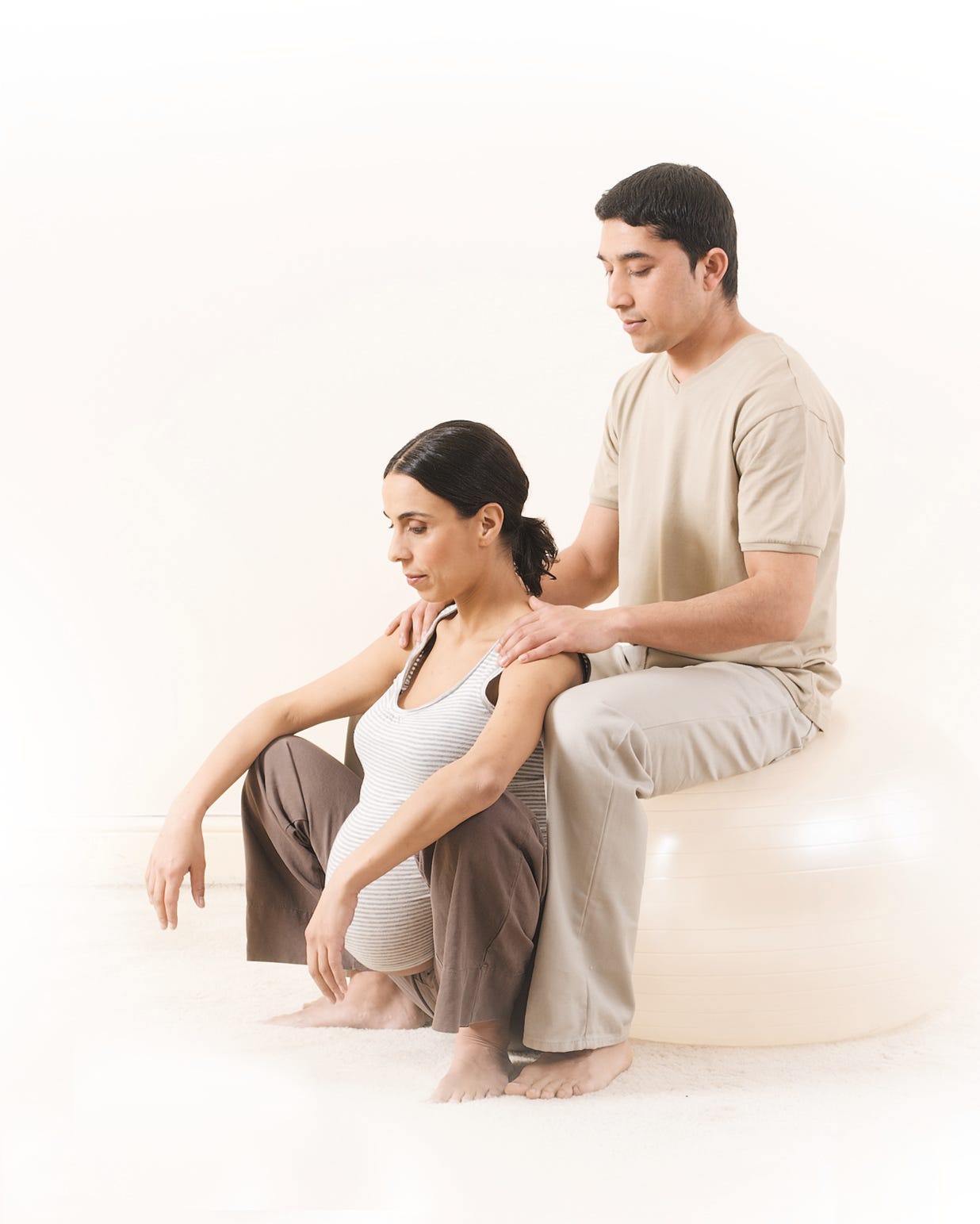
The birth of “ shiatsu for midwives”
Amongst our students we had quite a few midwives, obstetricians and GP’s. Initially I felt it wasn’t my place to be teaching them what to do during their birth, but they loved it.The midwives were so enthusiastic about my approach that they felt it should be available for every couple and encouraged me to set up my “Shiatsu for Midwives” courses at my local hospital St Michaels which I still teach today. We even did an audit of the work and the obstetricians were supportive of us doing a randomised control trial. Sadly we never got the funding but I hope one day that a study will be done. What I taught in those early birth preparation workshops is a core part of it, although I also teach shiatsu for pregnancy, postnatally and for babies.
Midwives started referring clients to me for sickness in the first trimester of pregnancy, as there was nothing they could do. They also sent me clients with recurrent miscarriages. Some of these conceived successfully, and that gave me more confidence in my work, especially in the first trimester. Some weeks I’d be seeing 40 to 50 different women, in my classes and individual sessions. With many clients, I worked from early pregnancy, even attending some of their births, with many returning to me postnatally with their babies.
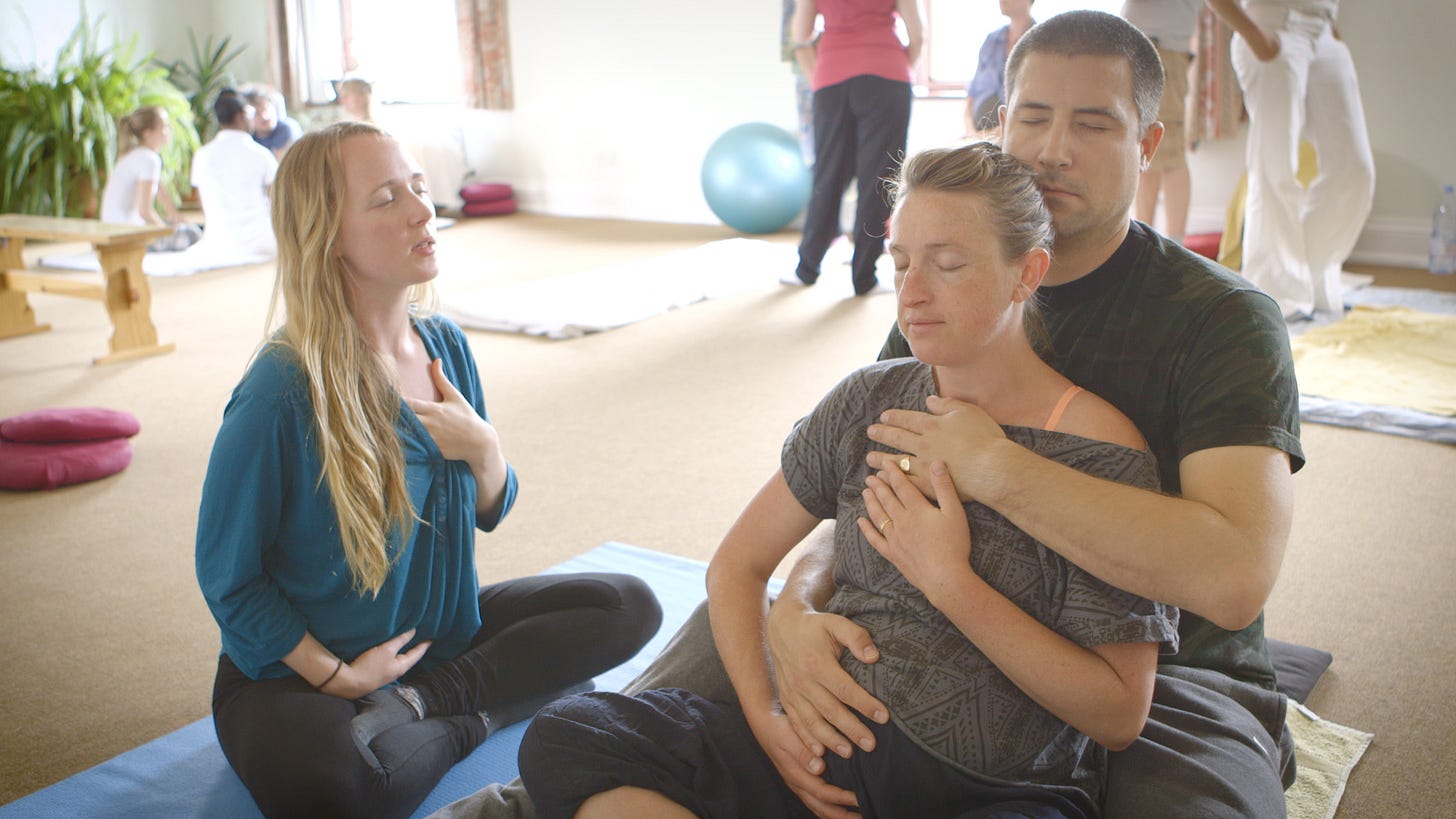
Birthing my son
Five years later, I became pregnant with my son Bram. During my pregnancy I continued teaching my classes and the birth preparation workshops as well as seeing clients. It helped me deepen my understanding of all I had learnt. Again, I wanted a home birth, but this time I was classified as high risk because of my post-partum haemorrhage! I had to convince the midwives that I had learnt a lot more about my body, that I was well and healthy and that I knew what I was doing. Eventually they agreed to support me. This time I had a different midwife who respected me. When I had established contractions, I knew she was on duty and so I called her. She sat quietly in another room for an hour or so and lightly knocked on the door as I went into second stage. She sensed it was the moment. She sat quietly near me and let me tune into what I needed to do. As I felt Bram’s head bearing down, I instinctively felt not to push and then my head remembered too!. His birth felt even more empowering than Rosa’s because I felt I could more deeply listen to my body as no one was telling me what to do. I stayed squatting for a little and waited to feel the contractions for the placenta. This time I birthed the placenta in its time and was able to stay at home. As I hadn’t lost so much blood my recovery was much quicker.
Teaching therapists
As time went by, I became more confident in what I was doing. I was inspired to continue deepening my work with supporting women in the maternity period so that they could be as well as possible during their pregnancy, be connected with their baby, be prepared for the power of birth and understand the importance of rest afterwards.
Eventually therapists, massage, shiatsu and acupuncturists asked me to start sharing some of my work with them. Initially I was a little daunted by this but in 1999 I taught my first class to shiatsu therapists and massage therapists. I now teach all over the world and have created some online classes too. Teaching has helped me deepen my work hugely. I still learn something new each time I teach! I still learn something new each time I work with a client. I never get tired of what I do.
Over the years, as I have passed through different stages of my life, I have understood the impact of pregnancy and birth on the future adult. I will write about this in another blog. Even if you don’t work with pregnant and postnatal clients, understanding what happens, both for the mother and her baby, impacts on the work you will do.
Tips for therapists wanting to support women in the maternity period
The most important is to
Find your unique way!
This probably includes:
Finding the training in the field that you want to specialise in, whether it is massage, or yoga or shiatsu or something else.
Drawing on the resources of the many books which are now available, including my own “Pregnancy and Childbirth: An holistic guide to massage and bodywork”. This was published in 2010 but it had taken me 7 years to complete. If I was to write it now, I would probably make it a little less academic. Indeed I am considering whether to write a new version and would love to hear your thoughts on this.
Enjoy the journey





